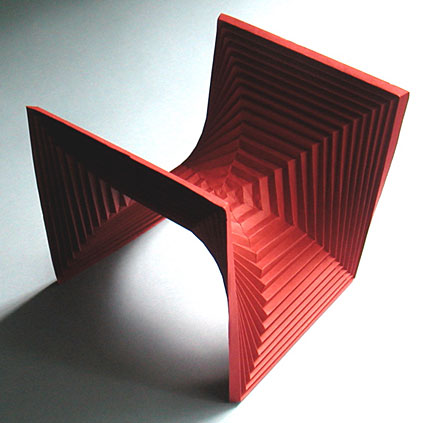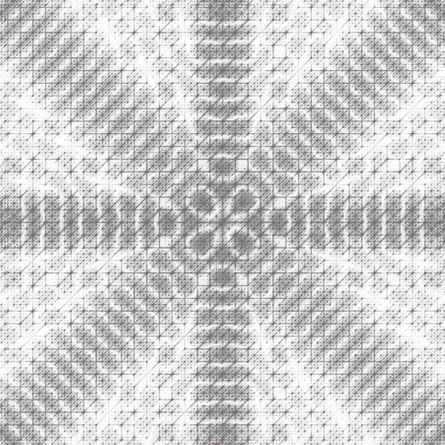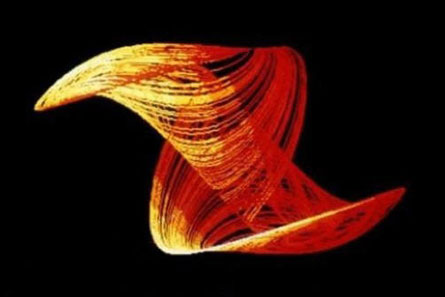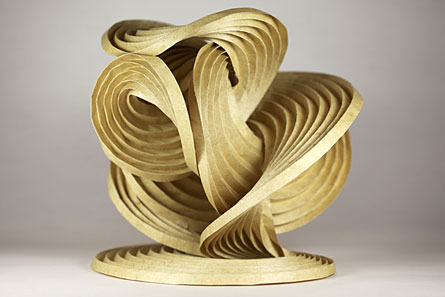The mutual inspiration of art and mathematics
Economics, origami and other fields trigger new and original creations
- More than 2 years ago
Mathematics is art, and art is mathematics. So claim the father-son pair of Erik and Martin Demaine of the Massachusetts Institute of Technology in Cambridge. “Our math and our art have blended together so much we can’t tell them apart anymore,” Martin Demaine says.




The Demaines were among a number of artist-mathematicians whose work appeared in the Mathematical Art Exhibition at the Joint Mathematics Meetings held in San Francisco in January. Their sources of inspiration ranged from debugging computer code, to the mathematical principles underlying economics, to the folds of origami. But all of the creators agree that a conversation between math and art can inform both disciplines.
For instance, Ian Sammis, a mathematician at the University of California, Davis, found that the best way to debug his computer code was to create artistic representations of it. He was working to compute the “fast Fourier transform” of any mathematical function, which represents the function as a combination of simple sine waves, much as sound is produced by a combination of simple sound waves.
To test his code, Sammis chose one of his favorite functions: the counterintuitive “space-filling curve” created by 20th century Polish mathematician Waclaw Sierpinski. Though it is a single, one-dimensional line, the curve will eventually visit every point inside a right triangle, filling the entire two-dimensional space. Sammis used his code to calculate the fast Fourier transform of a simplified version of Sierpinski’s curve, and then expressed the complex information the code produced as an image, coloring each spot on a grid according to the intensity of the corresponding wave.
In early versions, portions of the image looked like the snow on an ill-tuned television, so Sammis knew he had bugs. Once he’d managed to debug the code, a beautiful image emerged. “I’ve become fascinated,” he says, “by the fact that the most useful images are usually also the most aesthetically pleasing.”
Meanwhile, Thomas Hull, a mathematician at Western New England College in Springfield, Mass., began his project with the desire to illustrate a simple mathematical idea. Suppose you’re planning a road trip, visiting a bunch of cities and then returning home. If you manage to avoid driving through the same town twice, your path will trace out what mathematicians call a “Hamilton cycle.”
Hamilton cycles are a key concept in graph theory, but (as you may know from trip-planning) computing them can be devilishly difficult. Some cases, though, are pretty easy. Take, for example, a cube, and imagine that its corners are the nodes (like cities) and its edges are the links (like roads). To trace out the cube’s Hamilton cycle, start on the front face and travel to each of its four corners, then move to the back face and travel to each of its four corners, and then return to the starting point.
Hull considered that the Hamilton cycle for a cube has eight edges, and that an octagon also has eight edges. And voila! He had the seed of an interesting origami sculpture.
He took a two-foot by two-foot piece of paper and cut the corners off to form an octagon. Then he creased concentric octagons within it with alternating folds. He dampened the paper, pressed all the folds at once, and put the edges of the paper in the shape of the cube’s Hamilton cycle. The combination of straight edges and straight folds formed a beautiful curved surface.
For Safieddine Bouali of the University of Tunis in Tunisia, art grew directly from his research in mathematical economics. The profit, debt and capital inflow of companies vary, he found, in ways that are unpredictable but nevertheless understandable. When Bouali drew pictures showing how the three variables tend to change over time, he found that they traced out a pattern mathematicians call a “strange attractor”: The movements are ordered, but never quite repeat.
And often they do so beautifully. Captivated by the images he produced, Bouali abandoned economic realities and started varying the parameters of his model to change the shape of the patterns. “These are sculptures of motion,” he says.
For the Demaines, combining math and art is an inevitable extension of their relationship. Martin began his career as a traditional artist and Erik as a mathematician and computer scientist. Naturally, they told one another about their work – and naturally, each was intrigued with what the other was up to.
Origami, it turned out, was a perfect common ground.
One of their current projects is to study curved folds in origami, which for the Demaines means both understanding its mathematical properties and realizing its artistic potential. They are currently playing with curved pleats: taking a circle of paper, cutting out a small circle in the middle, and folding it in alternating folds along concentric circles.
The Demaines are working to understand the shapes that origami can take. They’ve shown that a similar origami sculpture, with concentric squares instead of concentric circles, doesn’t exist. That is, although the shape has been folded many times, they’ve shown that either the paper must be stretching or there must be tiny, hidden folds the origami artist didn’t know he was making. They don’t yet know whether their circular sculptures have the same difficulty, though they suspect not.
So now that they’ve created their sculpture artistically, they need to show that it exists mathematically. And when they do, their new mathematics will almost certainly spiral back into their art, inspiring their next artistic creation.
“>





